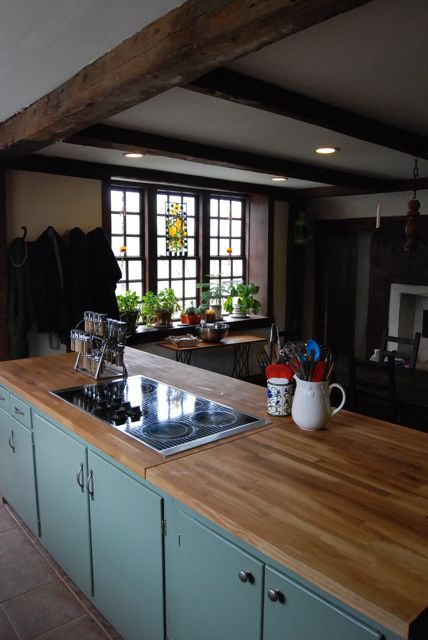Well, I’ve not yet abandoned ship, but if my basement takes on any more water I might have to. Several weeks ago I had a dream – a nightmare, really. My husband and I were in a new house – not this house, but ours all the same, big & old. We were in the middle of a flood and an enormous tidal wave was coming; I could see it rolling toward us through the window. My husband had just gotten home in an old paneled station wagon full of kids. Ours? Who knows. He came into the house with two of them, a boy & a girl. I turned for a moment, and when I looked back, I saw the children had drowned in water coming up through the floor. My husband pulled me from the room. We ran to the top of the basement stairs, but water was pouring in from beneath the door. We turned and ran to the upstairs staircase. Water was streaming down the walls. We flew up the steps, trying to get to the attic, but I knew we were going to die. Then I woke up.
Last week Portland received a record rainfall, which flooded our already wet basement and has yet to recede. Though we live at the top of a hill, we’re sandwiched between two rivers, the Fore & the Stroudwater, and several aquifers run directly beneath our house. While this might have been a plus back in colonial times, for cold storage and food preservation, nowadays it’s just a mess. Although the former owner sealed the basement floor with cement, there are several holes in the foundation through which water still rises. When the whole basement floods, like now, you can actually see the water bubbling up in places, evidence of the underground stream/s. Although we have a large drain pipe running from the basement to the outside, it’s been blocked for who knows how long. And because it’s buried underground, we have no idea where it is or goes. If we did – trust me, we’d have cleaned it out already. We have a sump pump, but it’s old and just can’t keep up. It doesn’t help that our basement floor is sloped such that water pools in areas where it can’t possibly drain. So my husband & I spend part of each day downstairs, using a snow shovel to push the water towards the sump pump hole, shuffleboard style.
In addition to our problems inside, things outside aren’t much better. I’ve spoken before about the compost ravine at the back of our property. Where we would dispose of sticks, twigs, garden refuse. Pretty much anything biodegradable got tossed down there, including last Halloween’s pumpkins and the better part of our next door neighbor’s dismantled trees. Well. After last week’s rainfall, parts of the ravine, heavily laden with all this stuff, have completely collapsed. My older daughter & I went out one morning to change the guinea pigs’ cage, and discovered a big chunk of our land has cascaded down the hill in a silt-slick mudslide. And now much of that refuse, sticks twigs and all, rests two doors down, at the bottom. The waterlogged ground surrounding the top of the ravine has also become saturated to the point of collapse. The only thing keeping it in place is a tree at the top. But even that seems to be tilting slightly, how long its roots will hold is anyone’s guess. Large parts of ground surrounding the ravine are riddled with cracks. We’ve warned our children not to play anywhere near there – especially on the rope swing now dangling precariously over the pit. Water is trickling from the mouth of the ravine, all the way down the hill to the bottom. It’s a tiny stream, but steady, and it’s seems just a matter of time until that entire back portion of yard sinks or goes cascading down the hill as well. One neighbor has suggested we call our insurance company, informing them we’ve lost part of our property in a natural disaster. Another neighbor is urging us to call the EPA, to have the silt cleaned up before it enters the water supply. My husband wants to fill the whole damn thing in with boulders, cover it with soil and pack it firmly down. Which we’d do, if we had the money – which we don’t. Me? I’m too tired to care what happens. I just pray I don’t get sucked down the hill when it falls.
The reason I haven’t posted in a month and why I am so very tired isn’t all this water. It’s our kitchen. My husband & I spent the better part of March remodeling it. By ourselves, on a very tight budget, while my husband worked his regular 9-5 job and I woefully suffered through the worst bout of Meniere’s I’ve had in years. As of today, the project is done. Save for a couple pieces of trim, bringing my cookbooks back in, one wonky tile that won’t stay down. Finished. We cooked part of Easter dinner in our brand new oven, the rest on the grill, and finally – after 4 weeks – began to enjoy the fruits of our labor. Unfortunately, the project triggered a Meniere’s episode from which I’m still reeling. I’ve spent 3 weeks now dealing w/ my ear, and it’s been horrible. Deafness, fullness, tinnitus to rival Niagara Falls, dizziness that comes & goes w/out warning, leaving me seriously disoriented and nauseous. That’s life w/ Meniere’s. I keep reminding myself this too shall pass, but this is the longest it’s gone on since before I was diagnosed. I simply can’t say how depressing it is, waking up day after day, in the same sorry state. Thank God for my family, who keep me going. And this house, for all its endless work, does its part to save me from myself too. I can’t languish in self pity when we still need to finish the office. And build a chicken coop. And plant the garden. And..
Stay tuned for my next post, all about the NEW KITCHEN. And many thanks to everyone who has left me a comment the past month. Although I didn’t have time (or often patience) to respond, please know I appreciate them.



